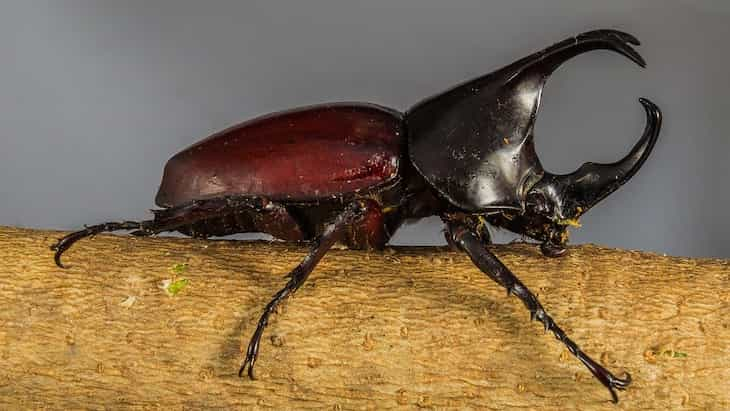Rhinoceros beetles are one of the most distinctive beetles in the world – their jet black color and horns are quite easy to remember.
Besides their distinctive looks, they have lots of other interesting features about them.
Let's find out more!

Distinctive Horns
Male rhinoceros beetles are named for the horns on their heads, resembling those of rhinoceroses.
These horns can vary in size and shape among different species, and they are primarily used by males during mating season for combat with other males.
Impressive Strength
Despite their small size, rhinoceros beetles are incredibly strong.
They have the ability to carry objects that are over 850 times their own weight.
To put it in perspective, it's like a human carrying something as heavy as a truck.
Flying Abilities
Rhinoceros beetles are equipped with wings that are hidden beneath their hard outer shell.
When they need to fly, they unfold these wings.
While they are proficient flyers, their flights may appear a bit unsteady due to challenges in steering.
Dietary Preferences
These beetles are known for their diet, which primarily consists of decaying wood.
By consuming decaying material, rhinoceros beetles contribute to the decomposition process and play a crucial role in recycling nutrients back into the soil.
Life Cycle
The life cycle of rhinoceros beetles involves several stages.
They start as larvae, residing in decaying wood.
As they grow, they undergo the pupal stage, eventually emerging as adult beetles.
The adult phase of their life typically lasts for a few months.
Flying Wobbles
Although capable flyers, rhinoceros beetles might exhibit somewhat wobbly flights due to their less precise steering abilities.
This unique aspect adds to their charm in the insect world.
Pet Keeping
Interestingly, some enthusiasts keep rhinoceros beetles as pets.
Creating specialized habitats for these beetles allows people to observe their fascinating behaviors and life cycles up close, turning them into unique and captivating companions in the insect-keeping community.
Previously, we talked about how birds recognize each other by their voices.












